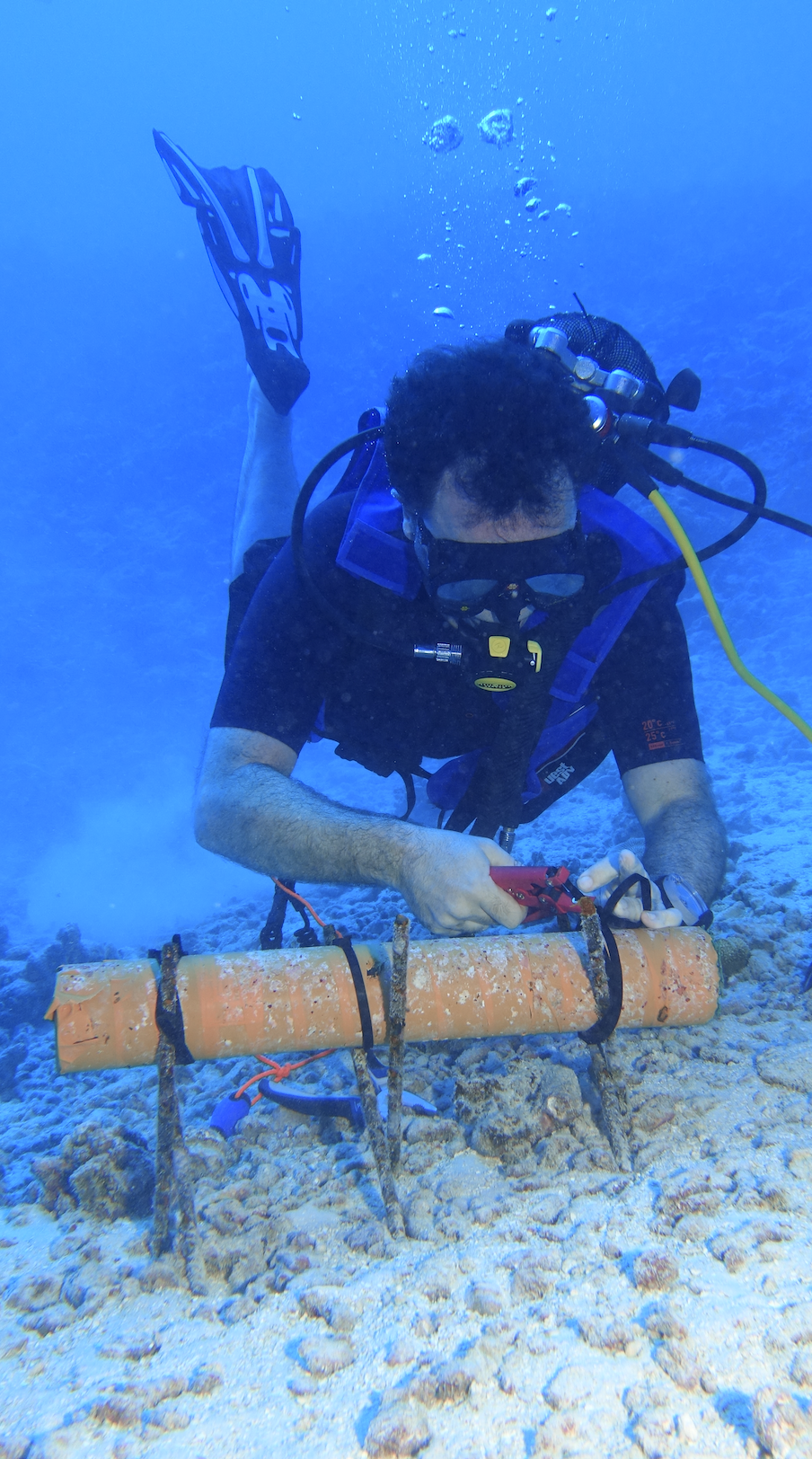Projects
Resonant waves in atolls driven by large-amplitude ocean waves (Maeva-Swot)
Principle Investigator: Emmanuel Dormy (Ecole Normale Supérieure / CNRS)
Co-Investigator(s): Ludivine Oruba
Collaborator(s): Serge Planes, Marania Hopuare, Eve Rebouillat
The Maeva-Swot project aims to take advantage of the unique resolution offered by the KaRIn-SWOT instrument to study the societally relevant research topic of large-scale oscillatory modes in lagoons. The study of waves transmitted from the deep ocean into the lagoon during strong offshore swells highlights the existence of large-scale resonant modes, also known as seiches. Their typical periods range from a few minutes to several hours, placing them in the category of infragravity or long waves. The impact of these slow modes on erosion and inundation is now well established. While seiches have been intensively studied in harbors, they have received comparatively little attention in atolls and lagoons. These island are currently under threat, as they are particularily vulnerable in a context of rising sea levels and increasing flooding risks.
Our project focuses on atolls and islands in the South Pacific, specifically in French Polynesia. In addition to SWOT measurements of Sea Surface Height by the KaRIn instrument, we also use numerical modeling and in situ probes. One of our first study cases is the atoll of Raroia. Its dimensions of 30 km by 10 km provide a suitable surface for studying large-scale modes using SWOT, and it is located directly on the SWOT one-day orbit. As part of this project, the lagoon of Raroia has been equipped with pressure sensors placed at a depth of 10 meters, recording pressure as a function of time at 1 Hz between April 2023 and November 2023. These pressure recordings are used to reconstruct the water level over time at the vertical position of the sensors. The energy spectrum of surface waves is reconstructed using Fourier analysis and compared with SWOT global coverage of the atoll. The outer reef of Raroia was also equipped with pressure sensors to characterize the incident energy, allowing us to study the energy transmitted from the open sea to the lagoon. To complement these sensors, our project also relies on wave measurements in the open ocean provided by the SWIM instrument onboard the CFOSAT satellite. We are now investigating seiches in other islands and atolls using the 21-day orbit of SWOT.

